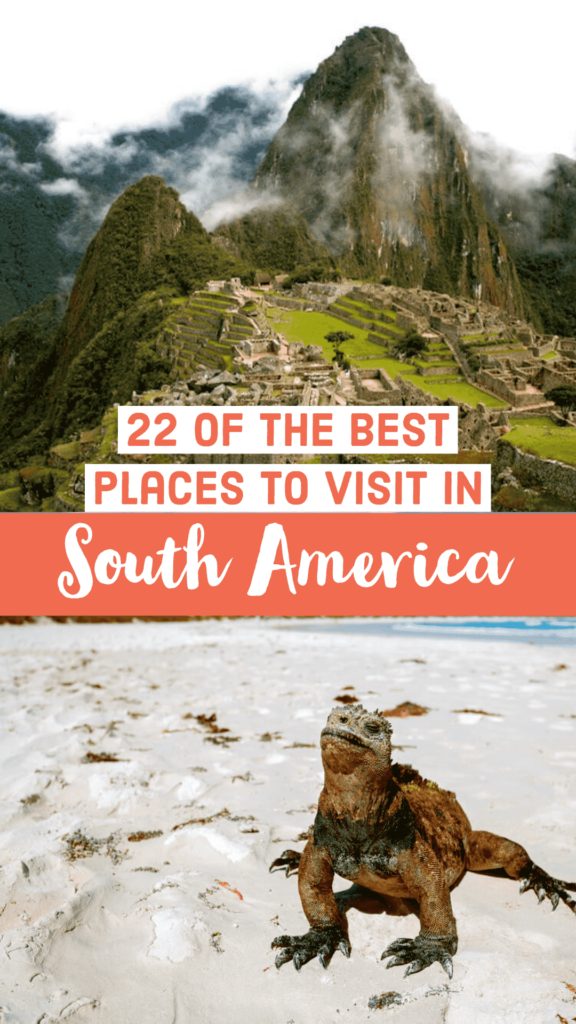This post may contain affiliate links. We may receive a small commission, at no cost to you, if you make a purchase. Read Disclosure.
Nestled below the blazing Andean sun you’ll discover ancient ruins tucked beside modern cities, glaciers rolling into deserts, and llamas lingering near luxury lodges – this is South America, the most diverse continent in the world.
Home to the Amazon Rainforest, the mountainous peaks of The Andes, the remnants of some of the oldest civilizations, and two Seven Wonders of the World; South America is full of amazing places to visit.
It’s a place where history is hugged by nature, where people dance to their own rhythm, and the food is as delectable as it is affordable.
There can be no doubt that South America offers so much to any adventure traveler. But if you’re planning a trip to the Latin-flavored continent, then be sure to check out the following most beautiful places in South America.
It’s where every mile is magic, and every step is a samba into the sublime.
- 1. Angel Falls, Venezuela
- 2. Salar de Uyuni, Bolivia
- 3. Machu Picchu, Peru
- 4. Rio de Janeiro, Brazil
- 5. Eje Cafetero, Colombia
- 6. Isla del Sol, Bolivia
- 7. Cotopaxi National Park, Ecuador
- 8. Iguazú Falls, Argentina and Brazil
- 9. Cartagena de Indias, Colombia
- 10. Mount Roraima, Venezuela
- 11. Torres del Paine, Chile
- 12. Tayrona Park, Colombia
- 13. El Chaltén, Argentina
- 14. Iquitos, Perú
- 15. Buenos Aires, Argentina
- 16. Chapada Diamantina, Brazil
- 17. Cayo Sombrero, Venezuela
- 18. Perito Moreno, Argentina
- 19. Salvador de Bahia, Brazil
- 20. Atacama Desert, Chile
- 21. Moai Statues of Easter Island
- 22. The Galapagos Islands
- Before You Go
- Pin To Save It On Pinterest
1. Angel Falls, Venezuela
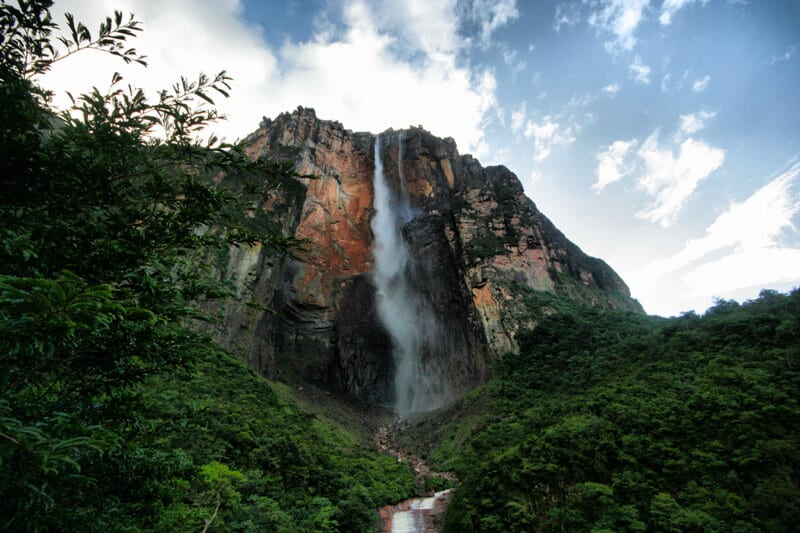
Starting with Salto Angel, also known as Kerepakupai (the deepest fall) to the Pemón tribe. Its English name was given to it after American aviator Jimmie Angel crash-landed his plane atop Auyán-Tepuí in 1937 while searching for gold (the aircraft remained there for decades).
This waterfall is one of the most breathtaking places I’ve seen in my life. It’s located in Canaima National Park and plunges over a cliff for 979 meters, making it the highest uninterrupted waterfall in the world.
If you want to get there, you’ll need to fly to Canaima because there are no accessible roads. I took a scenic flight to view it from above and it was a mind-blowing experience!
After flying to Canaima, you take a river expedition through lush jungle and winding waterways to the base of the falls. It’s best visiting after or during the rainy season (June to November) when the falls are in full thunderous glory!
There are no roads here — only rivers, red cliffs, and the roar of water. This is where true adventurers go exploring.
2. Salar de Uyuni, Bolivia
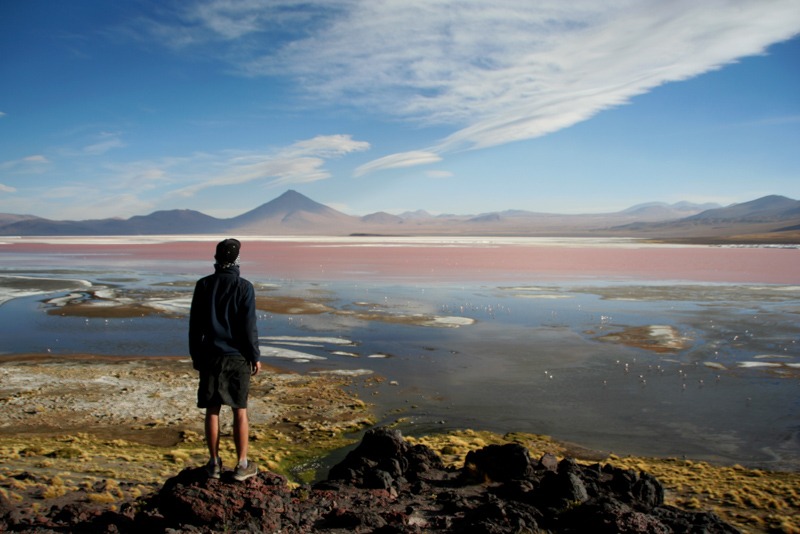
Sticking with the “records” theme, Salar de Uyuni is the world’s largest salt flat at over 10,000 square kilometers.
I was impressed by the region’s endless white expanses and surreal landscape. It really looked like I had arrived on another planet in which smoky volcanoes, colored lagoons, and great deserts create the scenery.
Stretching across the Bolivian Altiplano, Salar de Uyuni was created when the prehistoric Lake Minchin evaporated millennia ago. The result is a vast plain which reflects like a mirror during the rainy season (December to April), creating the illusion of walking on water or floating in the clouds.
To get here, most travelers fly into Uyuni from La Paz or Sucre, or brave a spectacular multi-day 4×4 journey from San Pedro de Atacama in Chile.
It’s also a great place for watching wildlife like llamas and pink flamingos all over the lakes.
Need more inspiration about the salt flats of Bolivia? Here’s some helpful resources:
3. Machu Picchu, Peru

The sacred city of Machu Picchu is probably the most famous landmark in Latin America. It’s one of the New Seven Wonders of the World, despite being centuries old.
This ancient Incan citadel sits in the Andes Mountains in Peru, above the Urubamba River valley, and was built in the 15th century and later abandoned.
Probably the most famous archaeological place in South America, it’s famous worldwide for its huge stone walls and mysterious history.
I recommend visiting Machu Picchu early in the morning to watch the sun rising over the green peaks.
To get to Machu Picchu, you’ll first need to travel to Cusco, a colonial city in which Spanish colonial buildings and cobblestone streets blend harmoniously with indigenous traditions.
Fair warning, Machu Picchu sits at 2,430 meters above sea level, so you will need to aclimate to the altitude before visiting.
Another popular way to visit Macchu Pichu is to hike. You can take the historic Inca Trail or the Salkantey Trek, which is less historic but said to be more beautiful.
4. Rio de Janeiro, Brazil
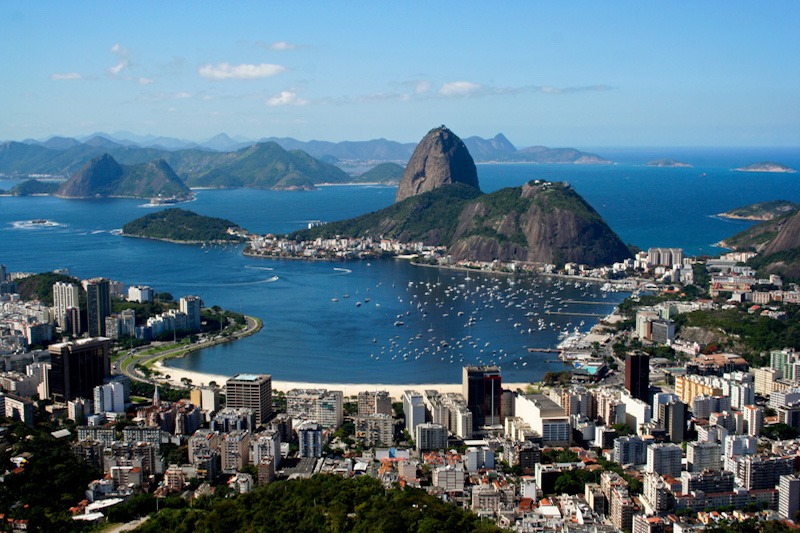
A city like no other, Rio de Janeiro is a place that sucks you in.
Most people like it because it offers nice beaches and crazy parties, as well as hosting the biggest celebration in the world: Carnival.
That’s true. However, Rio offers hidden secrets as well. You’ll have the chance to enjoy a fascinating mix of African-European culture and top-class hiking.
The city boasts the world’s largest urban forest, which contains magnificent mountains and peaks. Rio de Janeiro has dozens of hiking trails, so I recommend going up to the mountains and enjoying the city from above.
If you’re looking for relaxing things to do in Rio de Janeiro, you can’t go wrong with a day spent on the white sand beaches of Copacabana Beach or Ipanema Beach, or ride the cable cars up Sugarloaf Mountain.
5. Eje Cafetero, Colombia

Colombia has some of the best coffee in the world, so you shouldn’t resist the temptation of trying a delicious cup right on a coffee plantation!
It’s a great way to learn about the history of coffee, the process, and the varieties grown.
The most famous getaways to coffee plantations in Colombia are Salento, Filandia, and Pijao – all lovely colonial towns where it looks like no time has passed.
Moreover, the lush, green mountains offer a wide range of activities like hiking, horseback riding, kayaking, canopying and more. One of the highlights of the visit was taking a hike around Valle del Cocora.
6. Isla del Sol, Bolivia
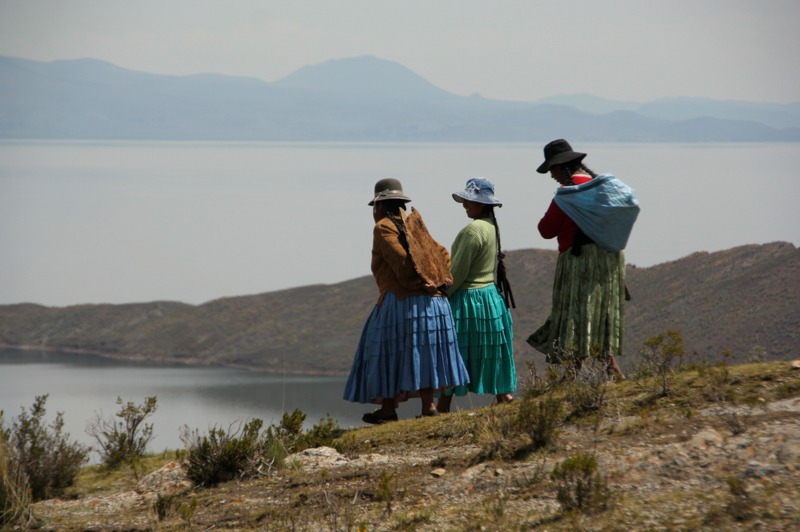
Located in the remarkable Lago Titicaca, or Lake Titicaca in English, the Island of the Sun is home to the Quechua and Aymara people, who still preserve their languages and old traditions.
According to Inca legend, this serene, eucalyptus-scented island is the birthplace of the sun, and of Manco Cápac and Mama Ocllo, the first children of Inti, the sun god, who went on to found the Inca Empire.
While taking the boat from Copacabana to this small island, I felt like I was in a sacred place.
The lake is huge; when you look at it, it feels like you are surrounded by an ocean. I recommend walking up to one of the hills to enjoy unforgettable sunrises and sunsets.
Today, the island remains steeped in sacred energy, with ancient terraced hillsides, Inca ruins like the Chincana labyrinth, and timeless villages where Aymara and Quechua traditions still thrive.
There are no cars, just stone paths, grazing donkeys, and sweeping views across the cobalt-blue lake.
7. Cotopaxi National Park, Ecuador
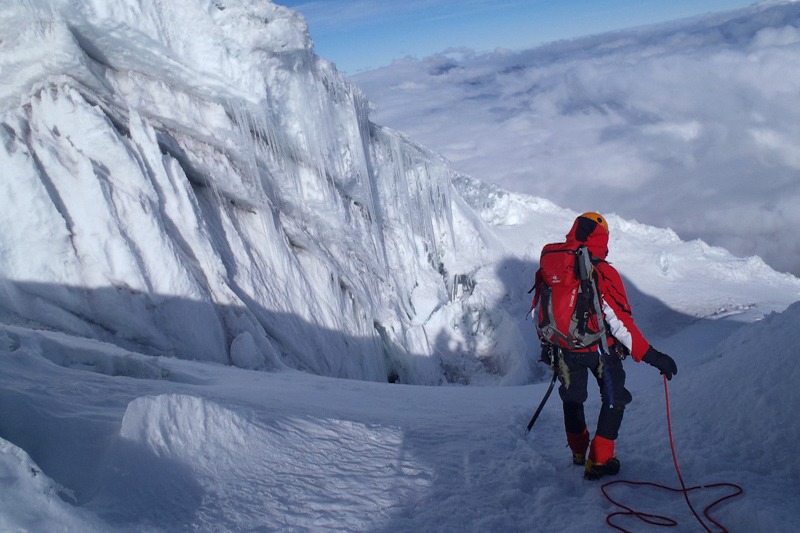
This conical-shaped stratovolcano has become one of the biggest tourist attractions in Ecuador, and it’s no surprise why.
Rising like a white-capped sentinel from the Andean highlands, Cotopaxi is home to one of the world’s highest active volcanoes.
The nearly symmetrical Cotopaxi Volcano towers sit at 5,897 meters above sea level, and are dusted in snow on the peak – visible from Quito on clear days.
Cotopaxi is still very much alive, its last significant eruption occurring in 2015.
As a hiking lover, I decided to climb to the top (almost 6,000 meters high), and it was truly a unique experience. Be mindful of the high altitude and ascend slowly to help with altitude sickness.
Keep in mind that it’s a challenging ascension against the darkness, the height, and the freezing wind. If you attempt the climb, you’ll need to hire a good guide and bring special gear such as crampons and ice axes.
If you don’t think the climb is such a great idea, you can take a jeep tour of the refuge, which offers amazing views of neighboring volcanoes.
The park’s windswept páramo is rich with wildlife like wild horses, Andean foxes, and the elusive condor.
8. Iguazú Falls, Argentina and Brazil

The name Iguazú means “big water” in the indigenous Guarani language, and no doubt they are right!
One of the New Seven Wonders of Nature, Iguazu Falls is a thundering force of nature surrounded by lush subtropical rainforest, and meets at the point where Argentina, Brazil, and Paraguay converge.
Iguazú Falls comprises of over 270 cascades that stretch nearly 3 kilometers; it’s taller than Niagara, wider than Victoria, and so mighty that when Eleanor Roosevelt first laid eyes on it, she reportedly gasped, “Poor Niagara.”
You can view it from the Brazil and Argentina side, but we recommend seeing it from the Argentina side so you can walk up to the Devil’s Throat – a U-shaped chasm of surging mist and roaring water.
The falls are protected by national parks on both sides, and both sides have wildly different perspectives, so if you can see it from both sides we recommend it.
Argentina puts you up close and personal via boardwalks and boat rides, while Brazil delivers the panoramic view you see above.
9. Cartagena de Indias, Colombia
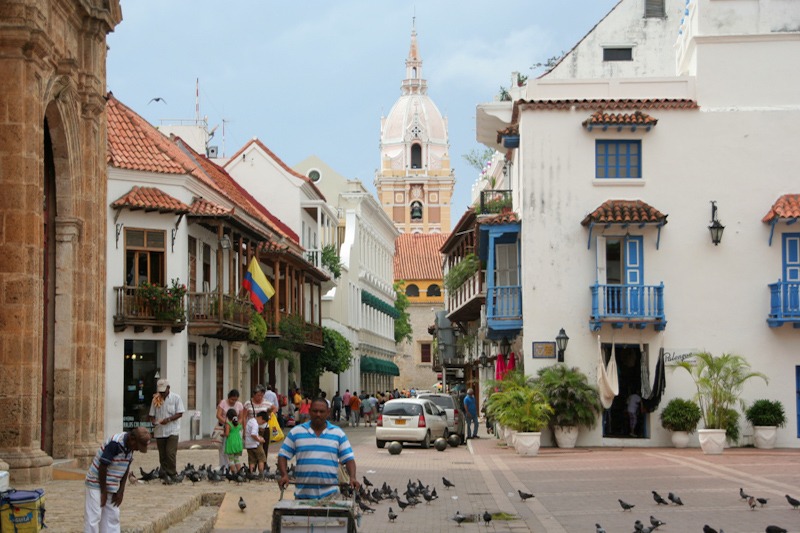
If you are looking for colonial architecture, Colombia offers some of the best-preserved colonial cities on the continent.
Cartagena de Indias is a lovely city full of energy and charm, Caribbean vibes, and friendly people.
Founded in 1533, it was one of the biggest slave ports in the Spanish colony, and is now a UNESCO World Heritage city.
Cartagena charms travelers with its sizzling street food and rhythmic Afro-Caribbean culture.
Wander the walled city’s maze of cobbled alleys, explore the mighty Castillo San Felipe de Barajas, or sip a sundowner in the bohemian neighborhood of Getsemaní, where murals bloom and music spills from every corner.
It was great to spend a few days strolling its colorful streets, old churches, and splendid castles, imagining that I was in one of Gabriel García Marquez’s stories.
10. Mount Roraima, Venezuela
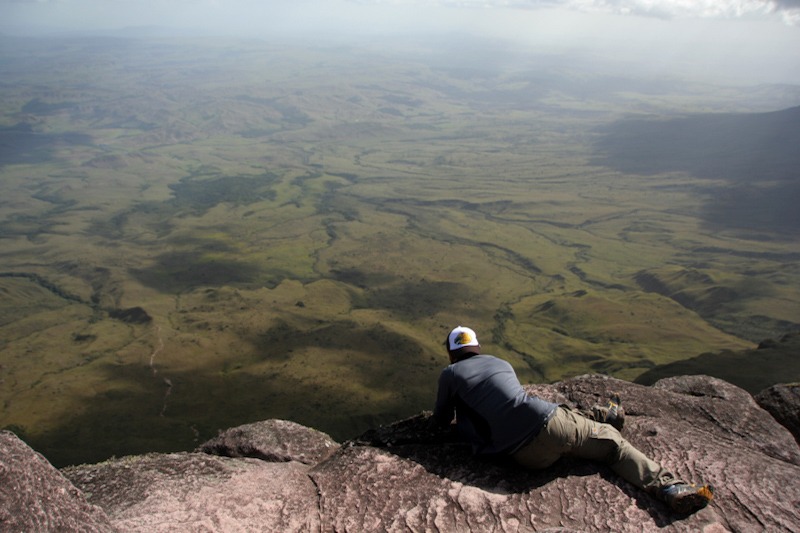
Mount Roraima is a majestic table-shaped mountain located in the south of Venezuela.
It’s the highest tepui in the region, and also serves as the triple border point of Venezuela, Brazil, and Guyana.
I took the five-day hike to the top and enjoyed the crazy scenery of strange rock formations, hundreds of waterfalls descending from huge cliffs, and vertigo views in all directions.
It’s considered one of the most beautiful hikes in the world, and I promise it’s well worth the effort.
11. Torres del Paine, Chile
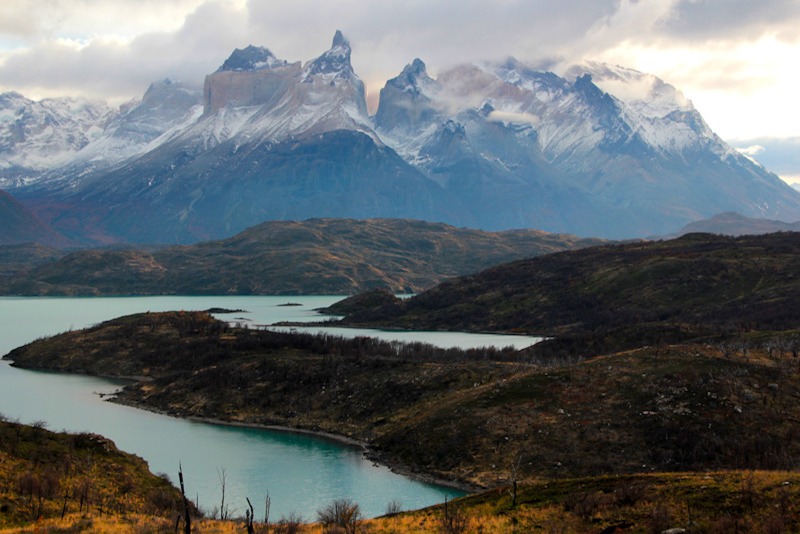
Torres del Paine is a very popular destination that spans across the Argentinian and Chilean Patagonia.
Puerto Natales in Chile is the getaway to this national park, in which you’ll find several day hikes and longer multi-day trails.
The park can get quite crowded during the high season (December to February). Fortunately, I visited Torres del Paine at the end of the season, when there were only a few other hikers.
I took the Torres W trek, which can be completed in five days, but you can also try the famous O circuit, which usually takes from seven to 10 days.
The region’s color-changing trees, huge glaciers, and dramatic peaks make it one of the most attractive places in South America.
12. Tayrona Park, Colombia
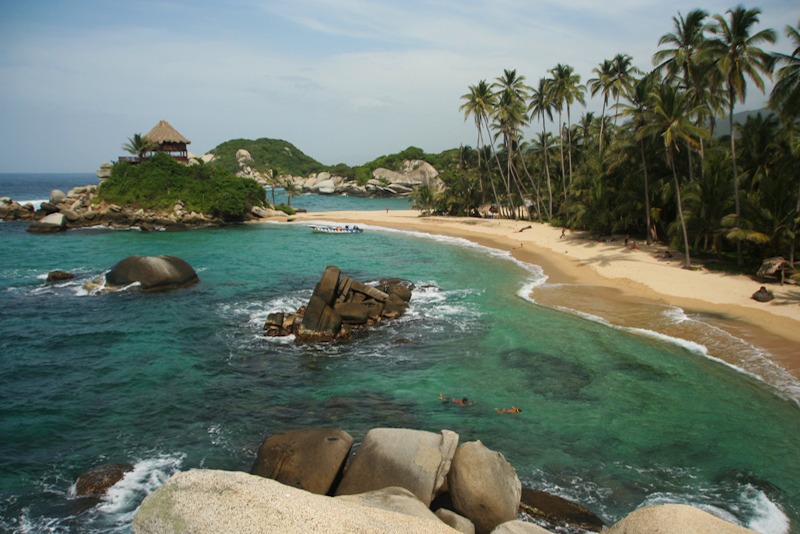
Tayrona National Park, home to the indigenous Tairona people until the 15th century, is one of the most authentic places in the country. One of the things that struck me most was the place’s wild nature.
The beaches are unlike any other Caribbean beaches you’ve seen. It’s all surrounded by lush green mountains and peaks, giving it an untamed character.
In addition, you can visit several archaeological sites hidden in the thick forest, or scuba dive in the clear waters around Cabo San Juan.
13. El Chaltén, Argentina
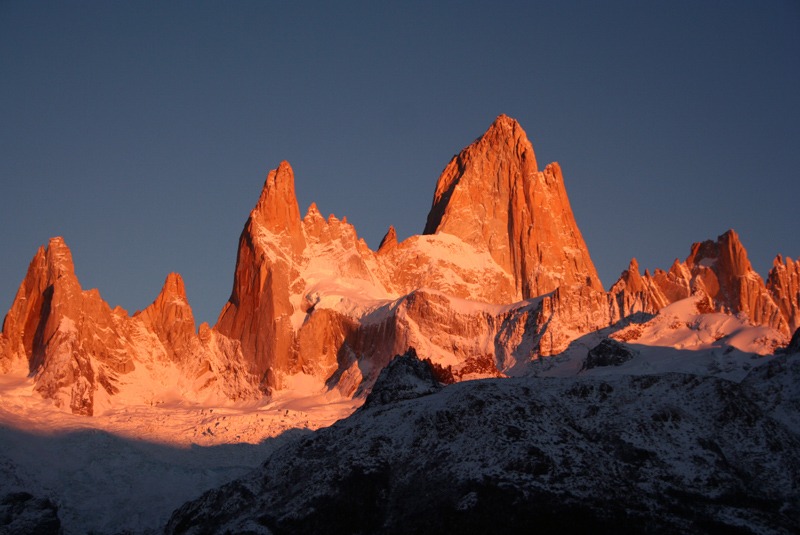
The Argentinian Patagonia is a real paradise for hiking lovers.
El Chalten is probably the best hike to do in the region, since it’s not too challenging (by South American hiking standards) and is surrounded by craggy snow-capped peaks.
Don’t miss the trail that takes you to Fitz Roy Mount and Cerro Torre.
One of the great advantages there is that you can take day tours to explore the mountains, lakes and glaciers, then go back to town later to enjoy a hot shower and comfy bed.
14. Iquitos, Perú
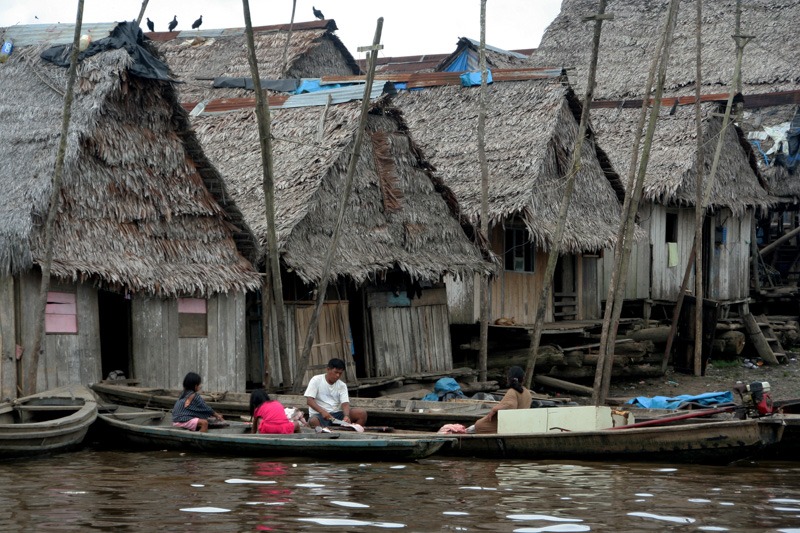
No visit to South America would be complete without an expedition into the Amazonas.
I recommend that you use Iquitos as your base. This city, accessible only by boat or plane, deserves a few days spent wandering around its markets and learning about the history of rubber.
You’ll find tours to get you into the jungle and see the wild flora and fauna.
In my experience, a three-day tour was perfect for getting to know the jungle. We went to a traditional village, navigated rivers, visited a lovely lake, and walked through the rainforest.
During that time, we were lucky enough to see a number of animals, including monkeys, tarantulas, caimans, piranhas, sloths, and hundreds of birds.
15. Buenos Aires, Argentina
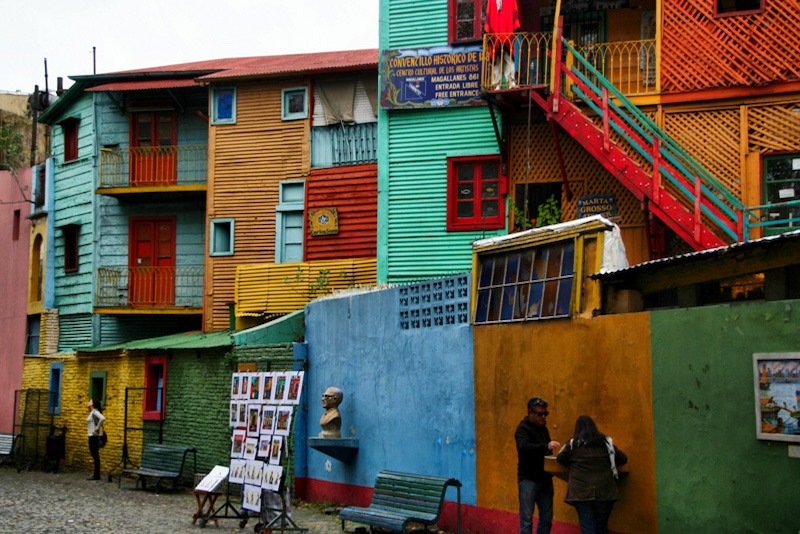
The most European of cities in South America, Buenos Aires is a cosmopolitan hub with countless museums, art galleries, theaters and cultural centers.
I spent a few days wandering around San Telmo, Puerto Madero, La Boca, Palermo and the city center.
I loved La Boca because it is a colorful neighborhood full of history, even though it has a bit of a bad reputation (don’t go outside of the touristy area with the colorful houses).
It was one of the main settlements of the Italian migrants, and it has a unique character. It’s also a good place to see the famous tango dances, and even take some lessons if you feel like it.
Make sure you only visit in the day time and stay on the tourist path.
Need more inspiration on Buenos Aires? Check out these other resources.
16. Chapada Diamantina, Brazil
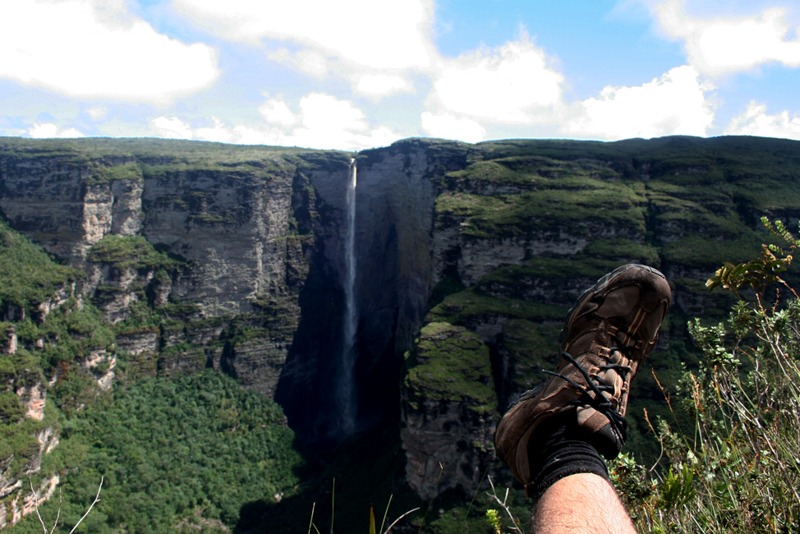
During my first visit to Brazil, Chapada Diamantina was the first spot on my bucket list.
The entire park is formed by giant valleys, deep canyons and, above all, hundreds of spectacular waterfalls.
It’s located in Brazil’s northeastern state of Bahia, and was once a 19th-century diamond-mining hotspot — hence the name “Diamond Plateau.”
Today, this protected national park is a haven for hikers, spelunkers, and nature lovers.
The main reason to visit the park is for the waterfalls, the most famous one is Cachoeira da Fumaça, at 353 meters high.
I saw it from another mount in the front, but there’s also a path that takes you right to the top, where the fall begins – that must be fantastic!
The gateway to the park is the charming town of Lençóis, a colonial-era gem accessible by a short flight from Rio de Janeiro or six-hour bus ride from Salvador.
17. Cayo Sombrero, Venezuela
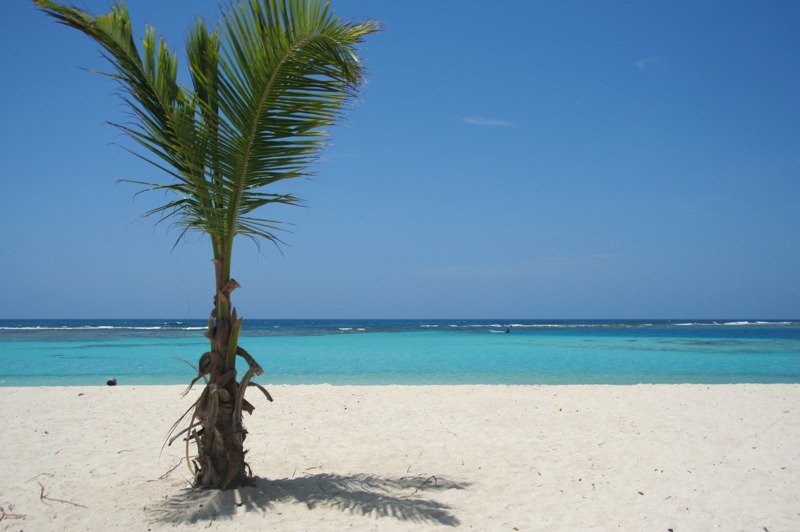
Cayo Sombrero is by far the most appealing beach in South America – it’s small; there are no roads or hotels, and nobody lives there.
Second, the sand is pure white, the water is a vibrant turquoise and there are plenty of reefs with tropical fish. It’s perfect!
To get there, you’ll need to travel to Chichiriviche. From there, it will be easy to find a boat that will take you to any of the cays.
Take a full day to chill out and enjoy this pristine paradise.
18. Perito Moreno, Argentina
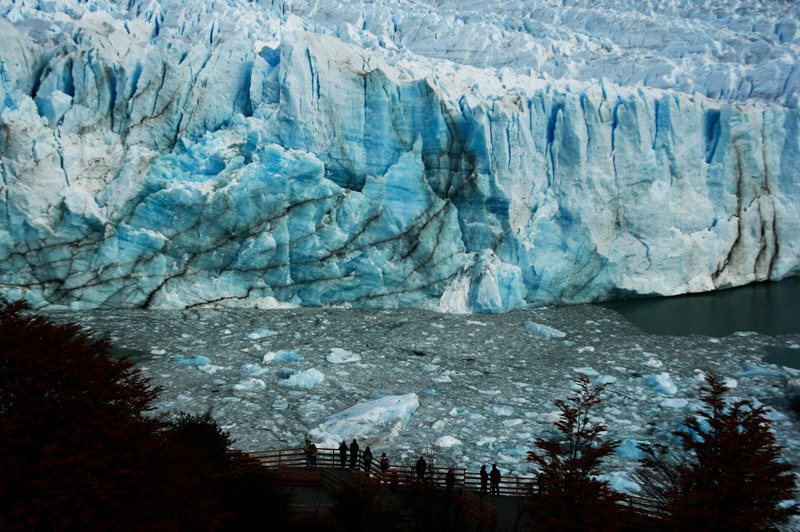
It would be a sin to travel to Argentinian Patagonia without including this glacier on your itinerary.
The Perito Moreno glacier in Parque Nacional Los Glaciares seems to have been made to be admired; I can’t find another explanation for it.
This huge mass of ice is five kilometers long and about 70 meters above the water level.
However, what really impressed me was catching a glimpse of the ice blocks falling away from the glacier and collapsing into the lake below. Unforgettable!
Don’t worry though, the glacier is reforming just as quickly as it is breaking up, so you can admire the natural phenomenon of the glacier falling without worrying about the environment.
This UNESCO world heritage site is one of the most unmissable places to visit in South America for nature lovers.
19. Salvador de Bahia, Brazil
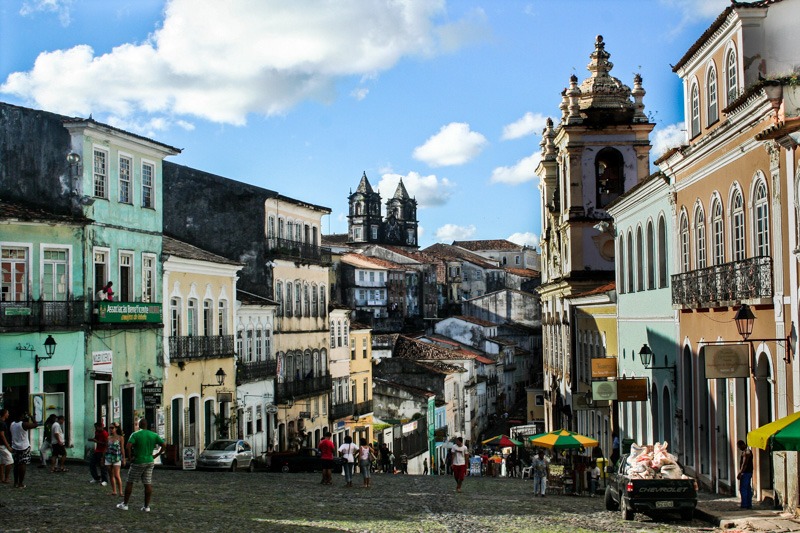
Salvador was the first capital and the main slave port of the Portuguese empire in Brazil. Therefore, most of its inhabitants are African descendants whose traditions and beliefs are quite connected with Africa.
Most visitors stay in Pelourinho, a charming (although touristy) neighborhood of colorful streets and steep slopes.
I think it’s the most interesting Brazilian city in terms of culture, colonial architecture and history.
The African-influenced food is delicious, and I’m already missing those nice “acarajés”.
20. Atacama Desert, Chile
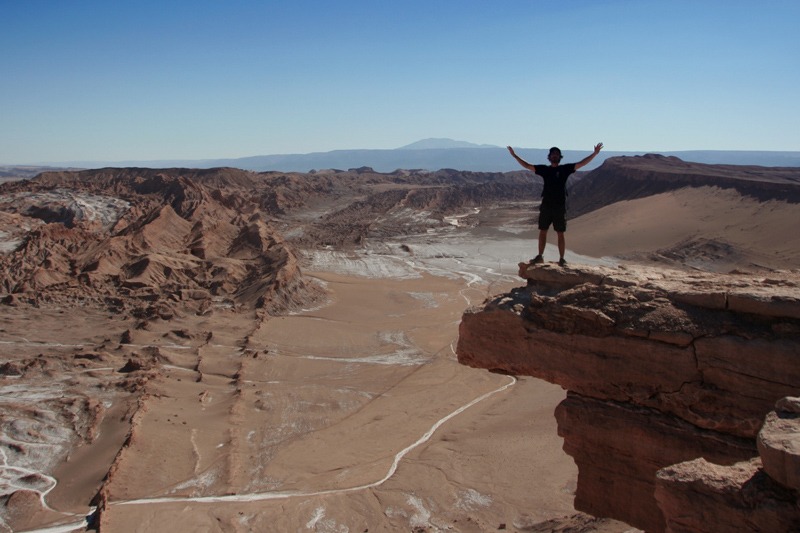
Atacama, the world’s driest desert, is a “must-visit” destination in the north of Chile. Its main attractions are salt flats, geysers, spring waters and huge volcanoes.
I rented a bicycle and visited Valle de la Luna, which is only 13 kilometers from San Pedro de Atacama.
The strange rock formations and desert expanses make you think you have flown to the moon. In addition, the sunset is spectacular.
Another place I loved was Piedra del Coyote, a big stone on which you can stand upon a rocky precipice. Don’t miss Atacama!
21. Moai Statues of Easter Island
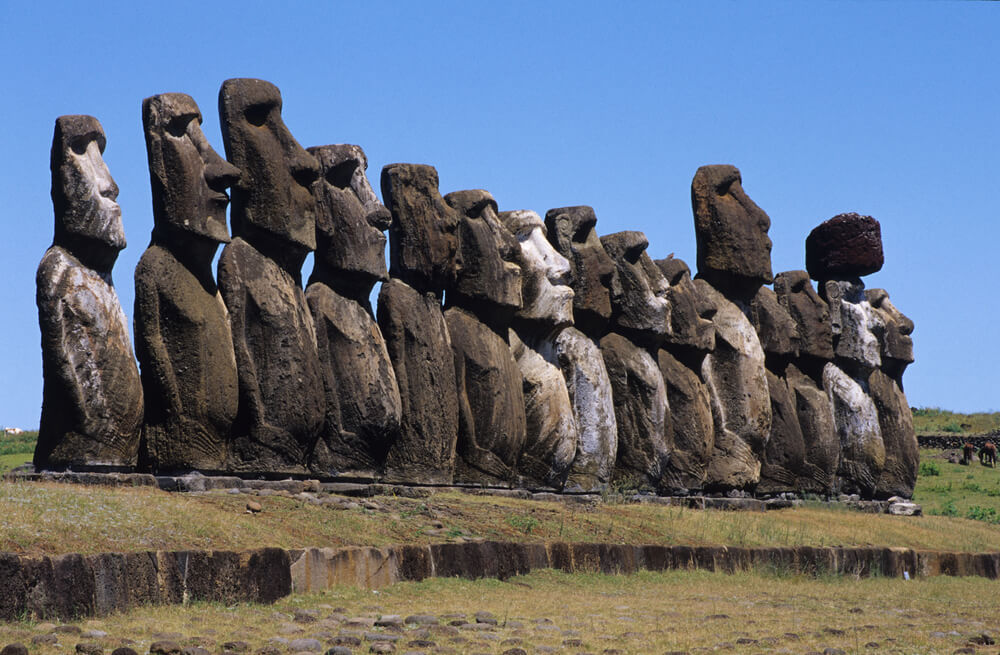
Off the coast of Chile on Easter Island is the mysterious Moai statues.
These stone figures, known as moai, are thought to have been carved by the Rapa Nui ancestors in the year 1000 C.E.
They stand with their backs to the sea, which archaeologists believe is said to represent the spirits of ancestors, chiefs and high ranking men in the Rapa Nui tribes.
It’s one of those incredible sites that you will never forget.
22. The Galapagos Islands
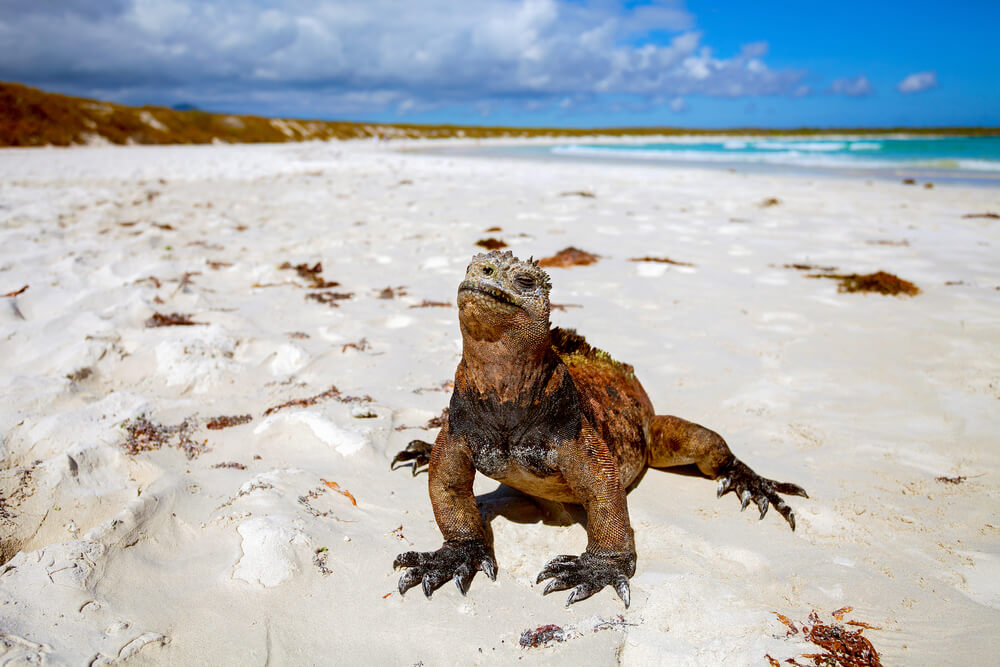
The Galápagos Islands are an archipelago of islands in the Pacific Ocean, off the coast of Ecuador.
They are famous for having helped Charles Darwin come up with his theory of evolution, which was detailed in his famous book The Origin of Species.
What inspired Charles Darwin, and anyone who visits the Galapagos is the wildlife.
It has a large number of endemic species, such as Galapagos Giant Tortoises. You can also see penguins, iguanas, and sea lions. For wildlife lovers, this is the best place in South America to visit.
Much of the Galapagos is protected, and only a four of the thirteen islands allow visitors to stay on them; those are Santa Cruz, San Cristobal, Isabela, and Floreana. The Galapagos is also the most volcanically active place in the world.
Before You Go
By now you can probably tell there are a lot of incredible places in South America to check out, and choosing ones to add to your itinerary is no easy task.
To see them all, you’re going to need to spend several months exploring the countries in South America and may also need to get prepared to do some hiking.
Before you go, one thing we must mention about South America is safety. While we don’t want to be a scare monger and it’s unlikely you will meet any violent crime in South America, you should always exercise caution.
Tourists are a target for petty crimes like bag snatching and scams, but there are also some areas you should actively avoid, too.
Look up the safest neighborhoods in the cities you visit, and which neighborhoods to avoid, and stick to the tourist trails. Don’t wander alone at night and stay in groups. Practice these words of advice and you’ll be fine.
We hope this guide was inspiring to you and that you have an incredible time in South America.
Pin To Save It On Pinterest
